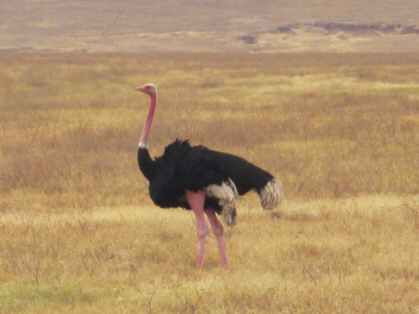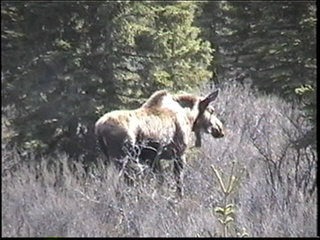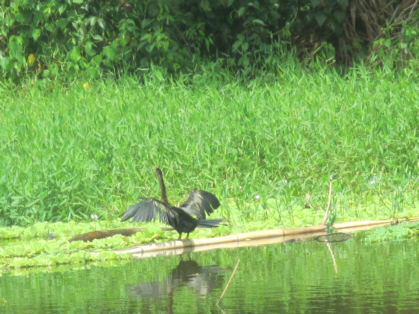Kapama (continued)
Nature Lessons
We didn't just look at animals on this safari. Paul took time to teach us about the ecology of the bush. He taught us about the termite mounds that were all over the place. We learned about the plant life. He discussed debates over how to solve problems that many of Africa's parks and game reserves face such as animal population control and poaching.
However, the one lesson I think we will all remember is the day Paul decided to lecture us on the difference between the digestive system of a rhino as compared to that of a buffalo. He did this by scooping up a pile of rhino dung to show us it was composed of mostly undigested grass. We thought it was pretty disgusting but at least Paul was wearing gloves. He went down the road a little to scoop up a chunk of buffalo dung. This time he wasn't wearing any gloves. Yuck! He showed us that the grass was much better digested in the buffalo dung. Later at our sundowner, we offered Paul a Wet Nap to clean his hands. He was amused at how us Americans thought everything was so disgusting.
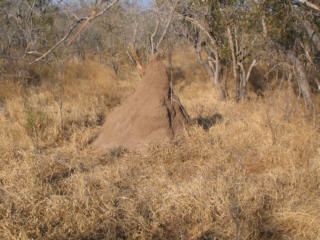
these termite mounds were everywhere
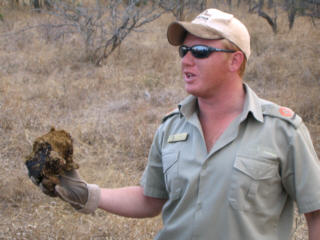
Paul explains the difference between this chunk of rhino dung and buffalo dung.
Hoedspruit Research and Breeding Centre For Endangered Species
Besides the game drives, there are several other activities you can sign up for during a stay at Kapama. Some of these activities include a hot air balloon safari, an elephant back safari, a walking safari, and clay pigeon shooting. Unlike the game drives, these excursions are not included in the package price and must be paid for at check-out.
The activity we chose was an afternoon at the Hoedspruit Research and Breeding Centre For Endangered Species. The center's goal is to study the endangered animals, breed them, and hopefully return them to the wild. We were shown a film about the various research projects being conducted and then led to some land rovers for a tour of the facilities.
The research center's largest project is its cheetah project. They have many cheetahs here including the extremely endangered king cheetah. The king cheetah has distinctive black fur down its back. There are believed to be less than 40 of these cats left in the world. The center has four of them.
The cheetahs are kept behind fences. Our driver would feed them by throwing a piece of beef over the fence. We came to a gated section referred to as Lovers Lane. This is the breeding section of the center. The females are kept in fences while two male cheetahs are allowed to roam freely. The researchers are then able to observe which females show the most interest in the males. When there is a match, the male is put behind the fence with the interested female in hopes that the pair will produce offspring.
Things got a little scary during our tour. One of the free roaming male cheetahs named Mr. Mean has a reputation to match his name. Our driver was attempting to get out of the land rover to open the exit gate of Lovers Lane. There is a stick next to the gate to nudge the cheetahs away if necessary. Mr. Mean was sitting in front of the gate and had no intentions of going anywhere. We eventually got through when Mr. Mean and the other male cheetah went to investigate which one of the caged females was making the mating call. Unfortunately, the next truck wasn't so lucky. At the conclusion of our tour, passengers from that truck told us how Mr. Mean managed to knock the stick out of their driver's hand and scratch her arm before she eventually made it back to the safety of the truck. She was not seriously injured and managed to stay composed enough to finish the tour. Obviously, the tourists that witnessed the attack were rattled. The incident was the main topic of conversation at the main building of the research center.
In addition to the cheetahs, we saw sable antelope, birds of prey (vultures and storks), and African wild dogs. Coincidently, while we were looking at the caged African wild dogs, some other African wild dogs had wandered in from a neighboring game reserve and stood outside the fences looking at the dogs in captivity. This rare wild sighting was a treat.
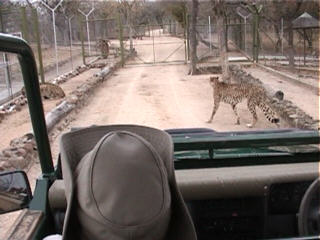
Mr. Mean guarding the gate
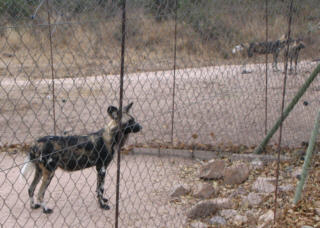
African wild dogs - the two at the top are not in captivity
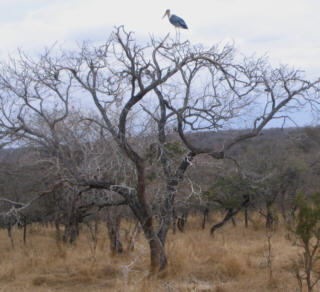
Marabou stork
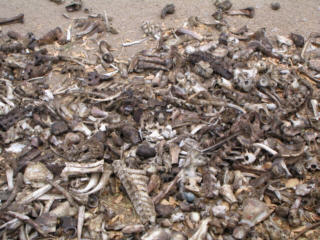
bird feed scraps, a.k.a. the Vulture Restaurant
Safari Over
Our three days at Kapama was over before we could blink an eye. We did one last morning game drive and then checked out. We had received tip envelopes in our check-in package. We left tips for our tracker, our driver, our chef, and housekeeping. The city of Durban was next on our itinerary. To get there we had a 1-hour flight back to Johannesburg where we caught a 1-hour flight to Durban.
Flying out of Kapama is very convenient since the small East Gate Airport is directly across the road. Paul and Thembe drove the six of us to the airport. Paul told us we were the most fun he has had in a while. We thanked him and Thembe for showing us a wonderful time.
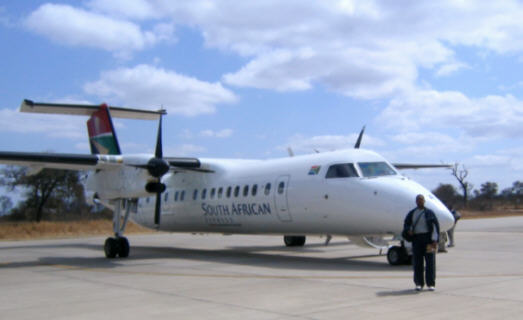
"Safari over. Durban, here we come."
